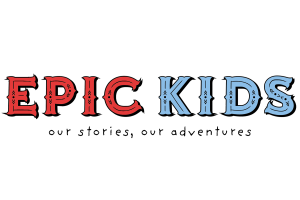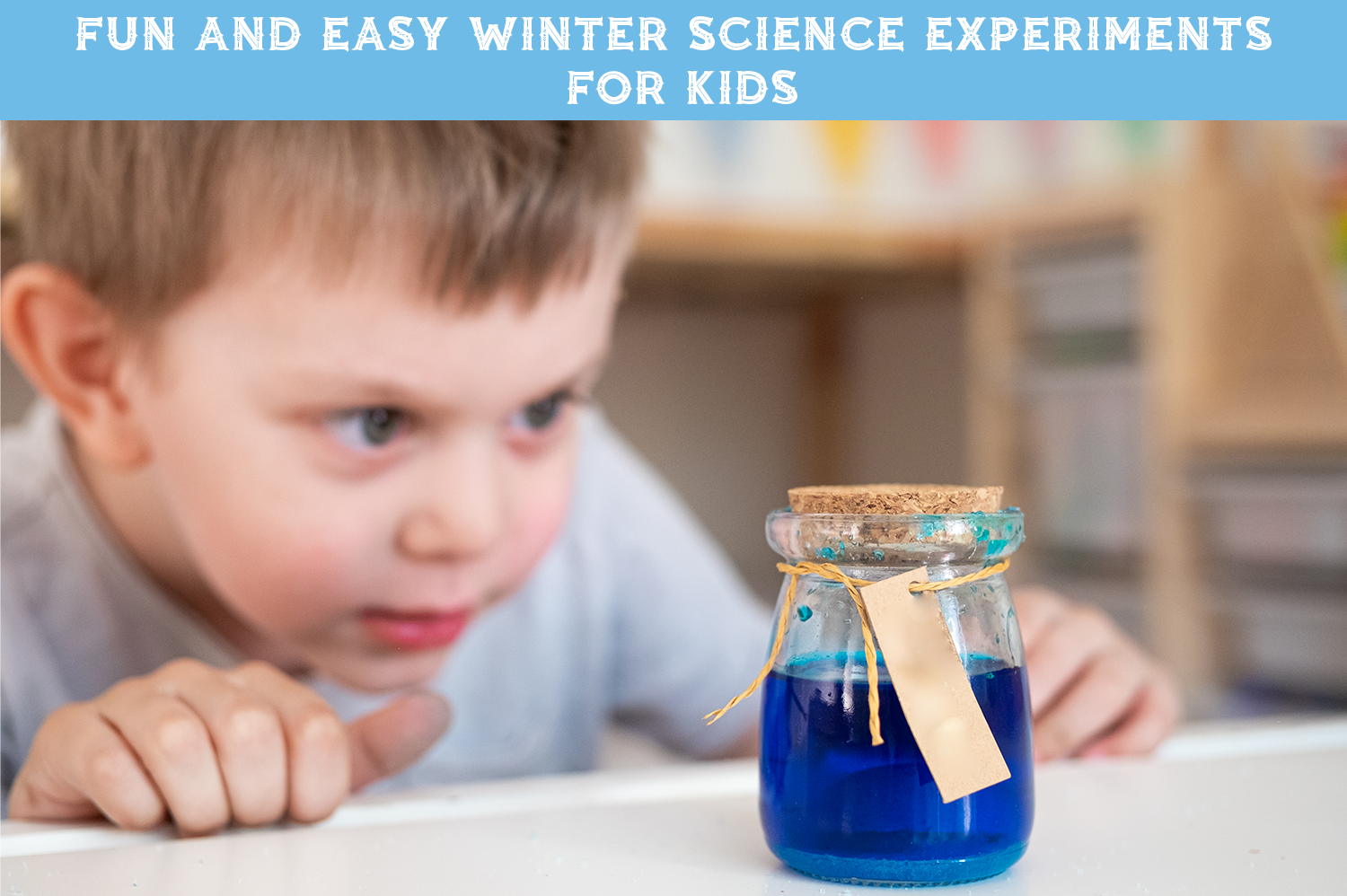Whether the weather is chilly or not so chilly by you, winter science experiments for kids are something you have to try this season! Here are a few fun and easy experiments to keep your kids learning and playing this winter.
Winter Science
The changing seasons are perfect for incorporating different types of science activities into your learning at home. Kids love themes, and a winter theme makes science so engaging!
The science experiments for kids listed below are fun hands-on experiences to get those little minds thinking. These activities will invite kids to explore, test, think, observe, and discover! Experimenting is great because it leads to discoveries and discoveries spark curiosity.
Winter Science Experiments for Kids
Winter Scent Lab
The sense of smell is amazing, especially since it’s so often connected to memory. Our sense of smell is regulated by the olfactory bulb which happens to be located in the limbic system, the part of the brain where memories are stored. This science experiment for kids is a fun way to experiment with the sense of smell and how we recognize each different smell we encounter!
To do this experiment, you’ll need:
- 5 small empty glass jars
- Water
- 5 Cloves
- A Cinnamon stick
- A tablespoon of vanilla extract
- 4 peppermint Altoids
- A sprig of pine or fir tree
- Food coloring
To set up the scent lab, place each of the scented items in separate jars. Add food coloring to the jars to disguise what the smell is – for example, don’t color the cinnamon stick jar red, as color can often be associated with smell. Then, fill the jars with water and close them up.
Let sit for 24 hours to help the water really pick up the smells. Once the water has absorbed the scents, remove any undissolved items from the jars. Place the finished jars on the table and place sticky notes down with the scents listed on them. Ask your kids to open each jar and match it to one of the sticky notes. Even if they created the scents in the lab, they will enjoy reopening them and matching the scents up!
How do Arctic Animals Stay Warm?
The Arctic is a cold place, but how do animals like polar bears and penguins stay warm? This is a fun experiment for kids to try so they can learn how these animals can survive in such a cold climate.
For this experiment, you’ll need:
- Ice cubes
- Cold water
- Large bowl
- Sandwich-sized plastic baggies
- Shortening (like Crisco)
First, fill a large bowl with water and place it in the freezer for just a bit to get it extra cold. Then, add ice cubes. We need this water to feel like the Arctic! Ask your kids to put their bare hands into the icy water, so they can get an idea of how cold the water really is. Brr! If you want, you can also challenge your kids to see long they can leave their hands in the chilly water.
Next, stick your kid’s hand in a plastic bag and cover the outside of it in an extra thick layer of shortening. Then add another plastic bag on top to cover the shortening and keep it from falling off in the bowl. Ask your kid to place their hand in the water again. Not only will they notice they’re not wet, but they’ll also notice they aren’t cold. If you challenged your kids to see how long they could stick their bare hands in the cold water, ask them to try it again now. We bet they’ll be able to last longer this time!
This experiment demonstrates how effective blubber is at keeping animals warm and insulated in subzero weather. Without their protective blubber keeping them warm, animals like polar bears wouldn’t be able to live in Arctic temperatures.
Melt a Snowman
This is a fun way to introduce a little bit of chemistry to your kiddos. There’s a lot to learn and explore in this hands-on science experiment!
Here’s what you’ll need for this activity:
- Baking soda-based fake snow (if you need a recipe, try 1 cup of shaving cream and 1 cup of baking soda)
- White vinegar
- Droppers
- Googley eyes, baby carrots, sticks, and any other items you need to decorate your snowman
First, make the fake snow. Next, have your kids take the snow and make a small snowman on a plate or tray. Don’t forget to decorate and dress him up! Once they’re done, fill droppers with vinegar and let your kids take turns squirting the vinegar on the snowman, making him fizz and “melt” away.
This science experiment is showing what happens when a chemical reaction takes place. A chemical reaction is all about what happens when an acid reacts with a base. In this case, the vinegar and baking soda combine, and carbon dioxide is released causing bubbles and fizzy froth.
Frost in a Can
Even if you don’t live somewhere where it snows, you can still learn about winter and frost in your own frost-making science experiment for kids!
For this experiment, you’ll need:
- Aluminum cans
- Salt
- Crushed ice
This experiment is easy to set up, so it can be a fun opportunity to also introduce the scientific method. Ask your kids which can will produce frost faster: the can with just ice or the can with ice and salt?
Once they’ve made their guesses, you can conduct the experiment. Fill both cans up with ice and then sprinkle one can liberally with salt. You can then watch as the can with the salt will form frost! Salt lowers the melting point of ice, and when this happens, the water vapor around the can falls below freezing as well. Frost forms on the outside of the can when the water vapor is freezing. The other can without salt has a higher melting point that’s above freezing, so while it can make condensation, it can’t make frost. Now is the time to check in and see if hypotheses were supported or denied – did it work like they guessed it would?

We’re here to help your family have fun!
Learn More with Epic Kids
We hope you find these winter science experiments for kids exciting as well as educational! At Epic Kids, we love helping families come together and have fun.
If you’re looking for stories about extraordinary kids, family-friendly news and events, and fun activities, it’s time you signed up for Epic Kids! Get this fabulously fun publication, that both parents and kids enjoy, delivered straight to your mailbox.






